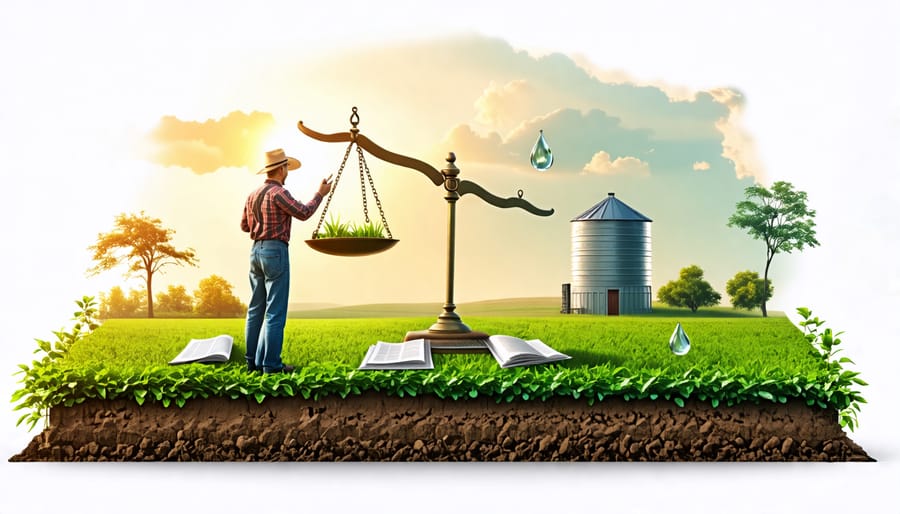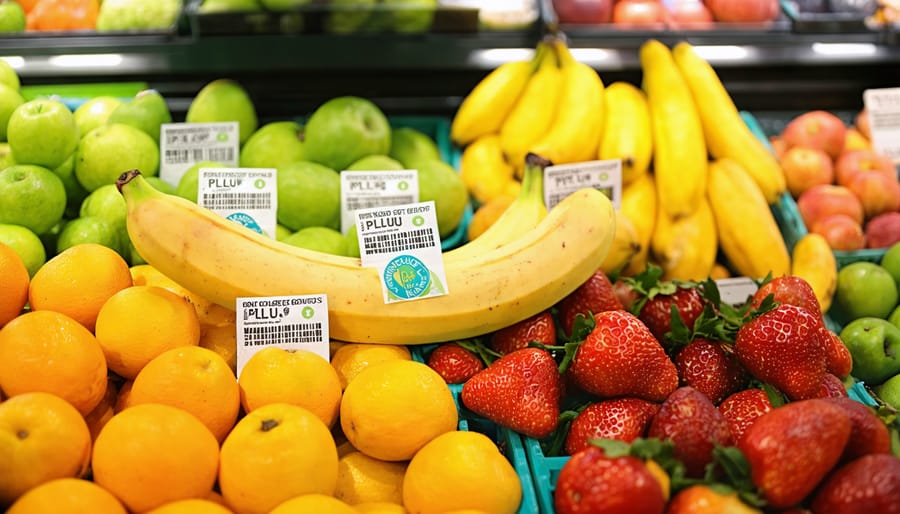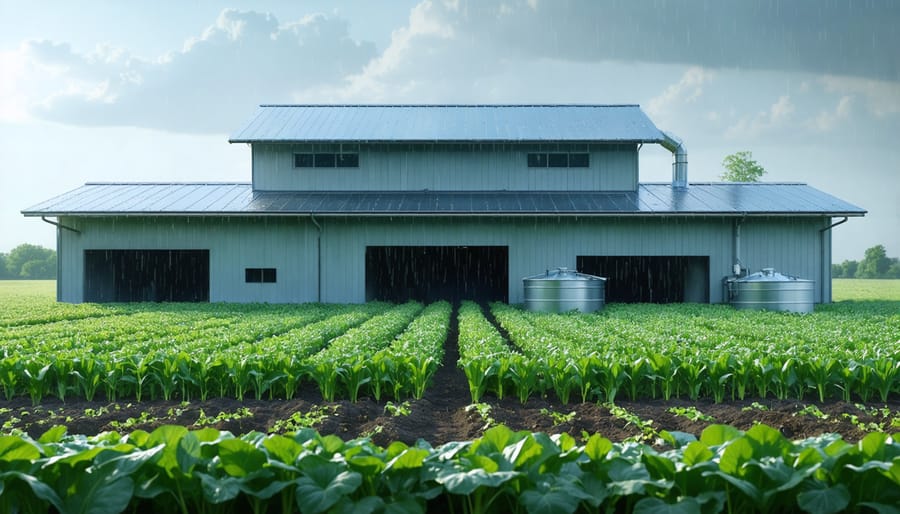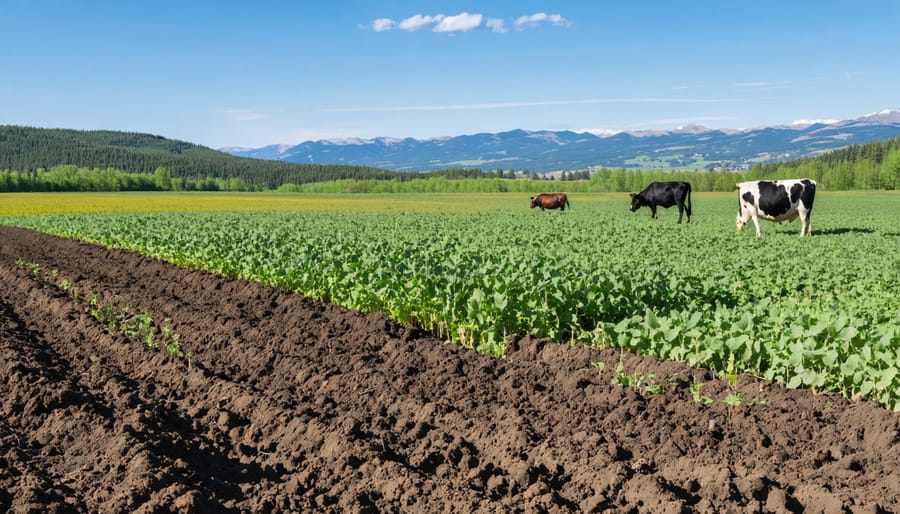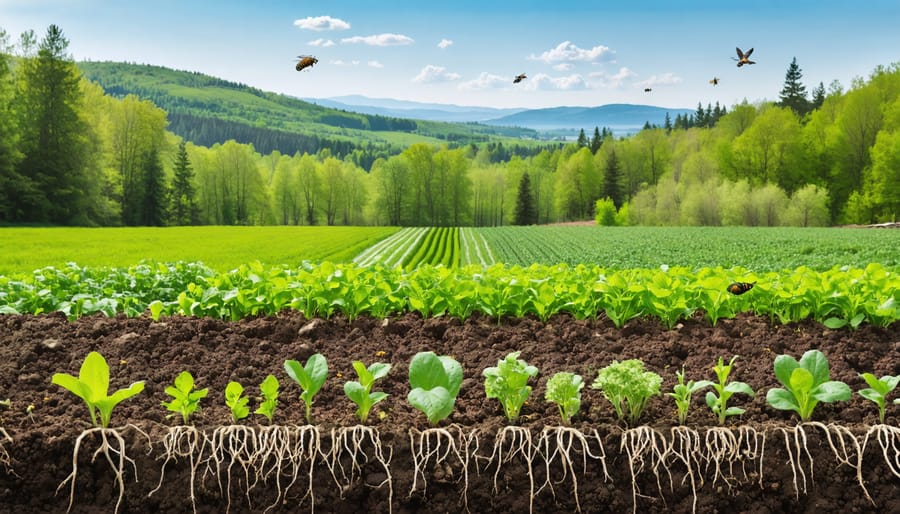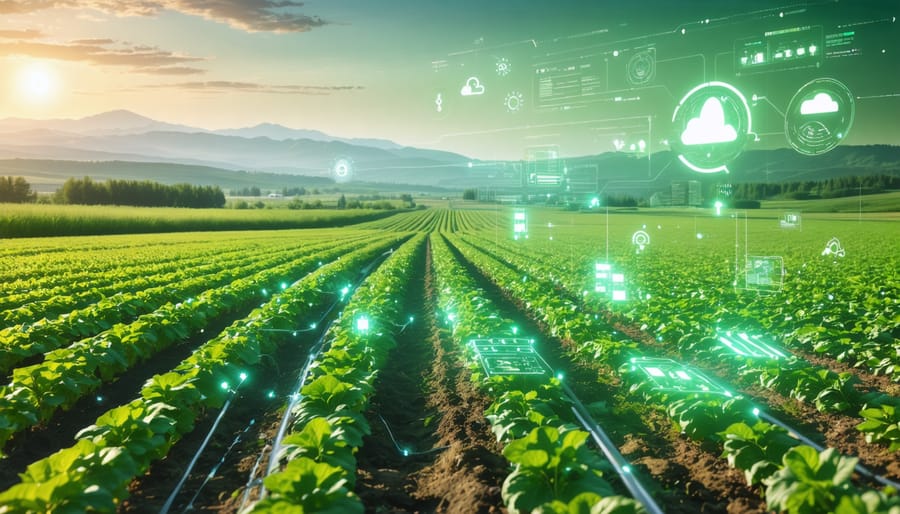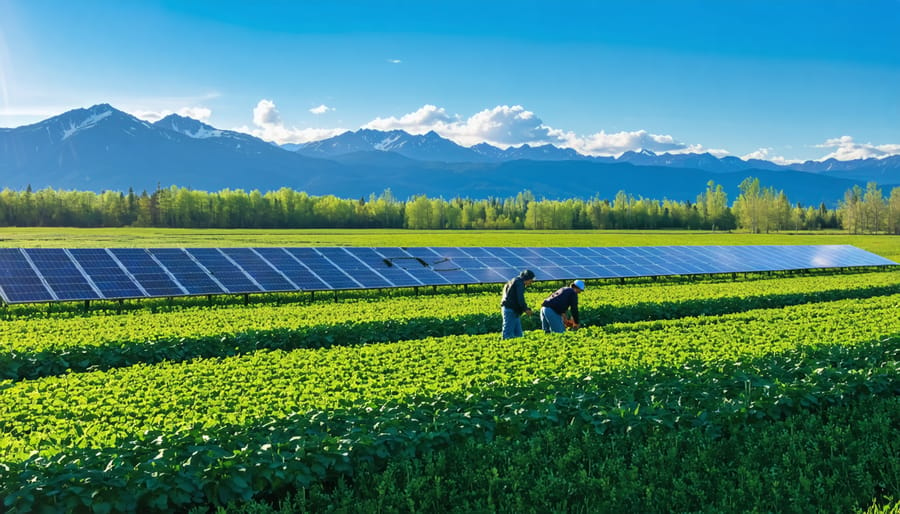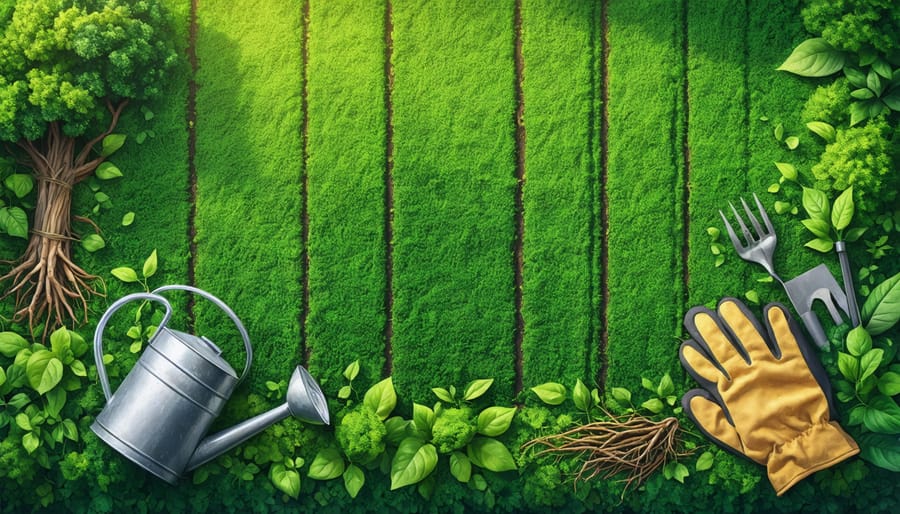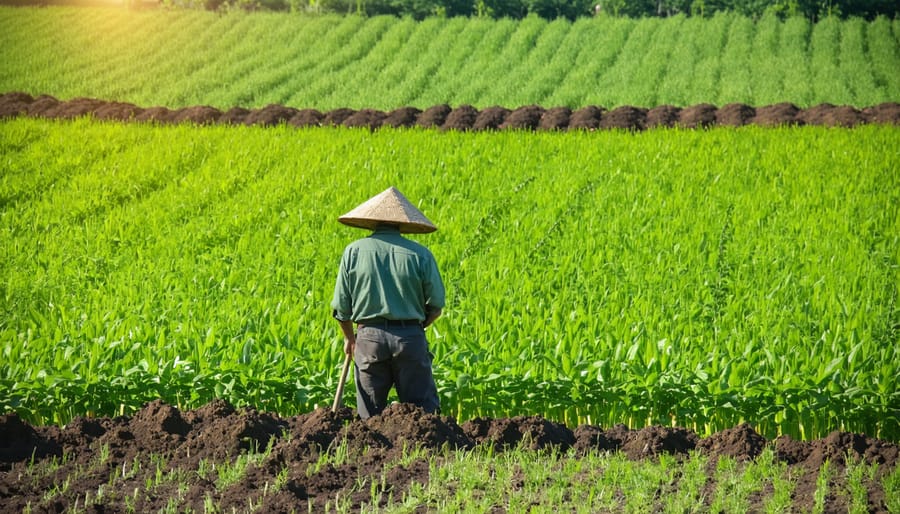Check your local building codes and obtain necessary permits before installing a rainwater harvesting system to ensure compliance with regulations. Implement water quality testing and treatment measures to ensure the collected rainwater is safe for its intended use, whether irrigation, livestock, or domestic purposes. Join the assistance for organic farmers program to access resources, funding, and expert guidance on integrating rainwater harvesting into your sustainable agriculture practices. Educate yourself on provincial water rights and usage laws in Alberta to understand your legal obligations and protect your access to this valuable resource.
Understanding Rainwater Harvesting
Types of Rainwater Harvesting Systems
For farms, several types of rainwater harvesting systems can be implemented depending on the scale and specific needs. One common method is using cisterns or tanks to collect and store rainwater from rooftops and gutters. These systems can range from simple rain barrels to large underground tanks capable of holding thousands of liters. Another option is creating swales or berms in the landscape to redirect and capture rainwater, allowing it to infiltrate the soil slowly. This technique is particularly useful for irrigation and groundwater recharge. Farmers can also construct ponds or reservoirs to collect runoff from fields and pastures, providing a valuable water source for livestock and crops during dry periods. Ultimately, the most suitable system will depend on factors such as the farm’s size, water demands, and local climate conditions. Consulting with experts and learning from the experiences of other farmers in the region can help in selecting the optimal approach.
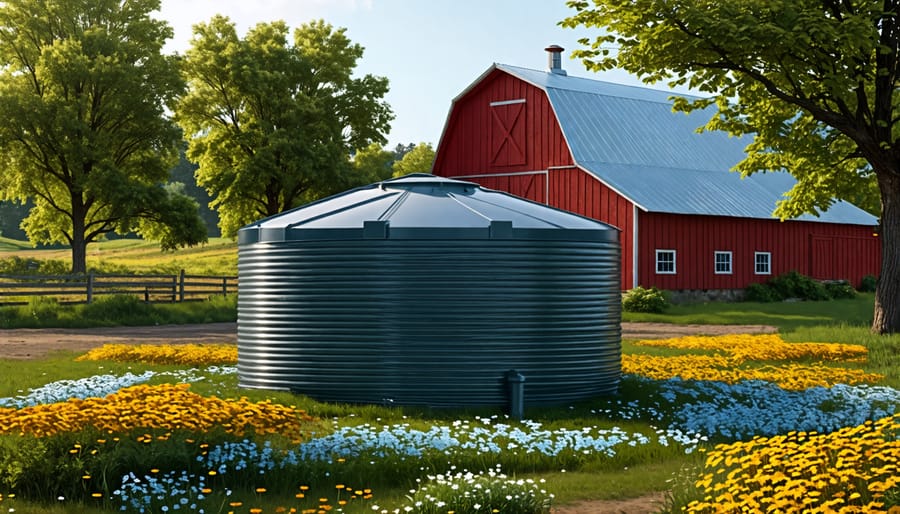
Benefits of Rainwater Harvesting for Farmers
Rainwater harvesting offers numerous benefits for farmers, particularly in terms of water conservation. By collecting and storing rainwater, farmers can reduce their reliance on municipal water supplies or groundwater, which can be especially valuable in areas prone to drought or with limited water resources. This sustainable practice not only helps conserve water but also leads to significant cost savings on water bills. Rainwater harvesting allows farmers to have a reliable source of water for irrigation, livestock, and other agricultural needs, even during dry spells. Additionally, using rainwater for irrigation can improve soil health and crop yields, as it is free from the chemicals and treatments found in municipal water. Implementing rainwater harvesting systems also demonstrates a commitment to environmental stewardship and can enhance the overall sustainability of agricultural operations. By embracing this eco-friendly practice, farmers in Alberta can lead by example and contribute to the responsible management of our precious water resources.
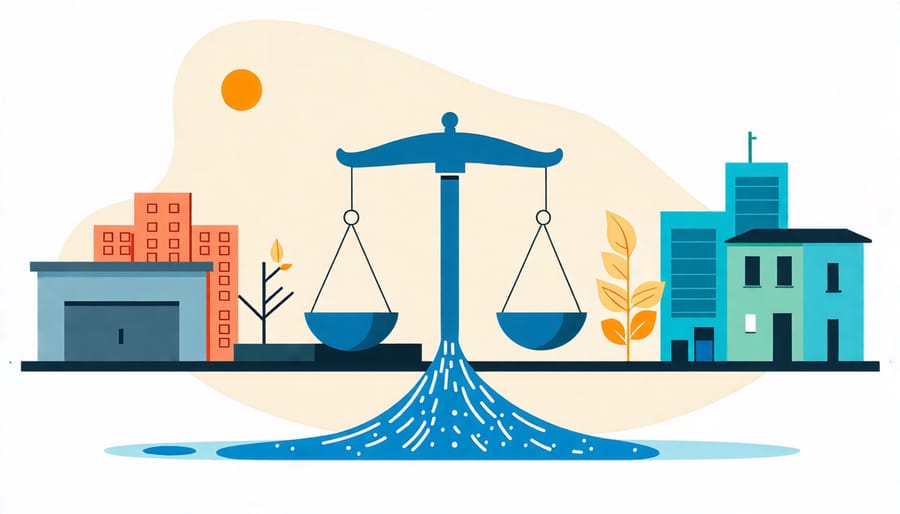
Legal Aspects of Rainwater Harvesting in Canada
Federal Regulations
At the federal level in Canada, there are no specific laws or regulations that directly address rainwater harvesting. However, the Canadian Environmental Protection Act (CEPA) and the Fisheries Act may have implications for certain aspects of rainwater harvesting systems. CEPA aims to prevent pollution and protect the environment, which could apply to the materials used in rainwater collection and storage. The Fisheries Act prohibits the release of deleterious substances into water frequented by fish, which might be relevant if harvested rainwater is discharged into natural water bodies.
It’s important to note that water management and conservation primarily fall under provincial and territorial jurisdiction in Canada. As a result, the legality and specific regulations surrounding rainwater harvesting can vary between provinces. In most cases, federal involvement is limited to situations where interprovincial or international water resources are concerned, or when there are potential impacts on fish habitats or navigable waters.
While federal regulations may not directly address rainwater harvesting, it’s crucial for farmers and individuals interested in implementing these systems to be aware of any applicable provincial and local laws, as well as best practices for ensuring water quality and environmental protection.
Provincial Regulations in Alberta
In Alberta, rainwater harvesting regulations are governed by the Water Act and the Environmental Protection and Enhancement Act. While there are no specific permits or licenses required for small-scale residential rainwater harvesting, larger systems or those used for commercial purposes may need approval from Alberta Environment and Parks.
According to the Water Act, a person may commence or continue the diversion of water for household purposes, which includes water used for human consumption, sanitation, fire prevention, and watering animals, gardens, and lawns. This means that most small-scale rainwater harvesting systems for personal use on farms or residential properties are legal without the need for a permit.
However, if a rainwater harvesting system is used for a purpose other than household use, such as large-scale irrigation or industrial use, a license may be required. The Environmental Protection and Enhancement Act also regulates the release of water into the environment, so farmers must ensure that their rainwater harvesting systems do not negatively impact local water bodies or ecosystems.
It’s essential for farmers to be aware of any local bylaws or regulations that may affect rainwater harvesting in their specific municipality. Some cities or towns may have additional requirements or restrictions on the size, location, or use of rainwater harvesting systems.
Alberta farmers interested in transitioning to organic practices may find that rainwater harvesting aligns well with their goals of sustainability and environmental stewardship. By understanding and complying with provincial regulations, farmers can confidently implement rainwater harvesting systems that support their agricultural operations while minimizing their impact on local water resources.
Local Bylaws and Regulations
While federal and provincial laws provide a framework for rainwater harvesting, it’s crucial to check with your local municipality for any additional bylaws or regulations that may affect your specific situation. These local rules can vary significantly from one area to another, so it’s essential to do your due diligence. Reach out to your local government offices or consult with experts familiar with the regulations in your region. By taking the time to understand and comply with all relevant laws, you can ensure a smooth and successful implementation of rainwater harvesting on your farm, while contributing to the sustainable management of our precious water resources.
Best Practices for Legal Rainwater Harvesting
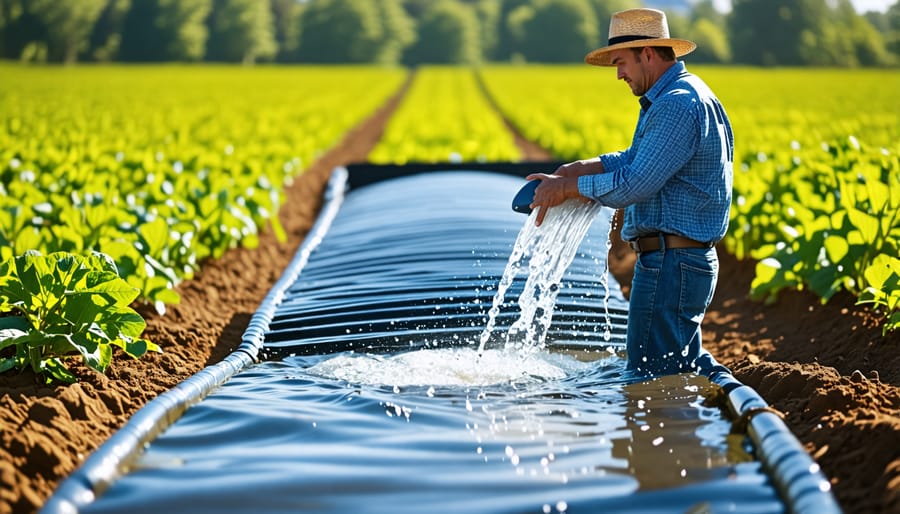
Proper System Design and Installation
Proper system design and installation are critical to ensure your rainwater harvesting setup complies with legal requirements and safety standards. Consult with a professional or your local agricultural extension office to develop a plan tailored to your farm’s unique needs. Key considerations include selecting the appropriate size and type of storage tank, determining the most suitable location for installation, and implementing measures to prevent contamination and overflow. Proper maintenance, such as regular cleaning and inspection of gutters, filters, and tanks, is essential to ensure the system functions efficiently and safely. By adhering to best practices and staying informed about any updates to regulations, you can confidently implement rainwater harvesting on your farm while contributing to sustainable water management in your community. Remember, investing time in proper planning and execution will pay off in the long run, allowing you to reap the benefits of this eco-friendly practice while being a responsible steward of our shared water resources.
Maintaining Water Quality
To ensure the collected rainwater remains safe and uncontaminated, it’s crucial to follow proper maintenance practices. Regularly clean and inspect your gutters, downspouts, and storage tanks to prevent debris accumulation and potential contamination. Install filters or screens to keep out leaves, insects, and other unwanted particles. Treat the water with appropriate disinfection methods, such as chlorination or UV light, to maintain optimal water quality. Conduct periodic testing to monitor pH levels, bacteria, and other contaminants. If using the water for irrigation, ensure it meets the specific needs of your crops and soil. Always follow local health department guidelines and seek professional advice if needed. By implementing these best practices, you can confidently use your harvested rainwater while complying with regulations and promoting sustainable agriculture on your farm.
Staying Informed and Compliant
Staying informed about the latest developments in rainwater harvesting regulations is crucial for Alberta farmers. As laws and guidelines can change over time, it’s essential to regularly review provincial and local requirements to ensure ongoing compliance. Engage with local agricultural organizations, attend workshops, and subscribe to relevant newsletters to stay up-to-date on any regulatory shifts.
If you’re unsure about specific aspects of rainwater harvesting on your property, don’t hesitate to reach out to local authorities, such as municipal offices or agricultural extension services. They can provide guidance tailored to your unique situation and help you navigate any legal complexities. By maintaining open communication and seeking expert advice when needed, you can confidently implement rainwater harvesting practices that align with current regulations and contribute to the sustainable future of your farm and community.
Conclusion
In conclusion, rainwater harvesting offers numerous benefits for Alberta farmers, including water conservation, cost savings, and sustainable agriculture practices. However, it is crucial to understand and comply with the legal framework surrounding rainwater collection in Canada, specifically in Alberta. Federal and provincial regulations, as well as local bylaws, govern the implementation of rainwater harvesting systems on farms.
By familiarizing themselves with the applicable laws, obtaining necessary permits, and following best practices, farmers can confidently incorporate rainwater harvesting into their operations while staying within legal boundaries. Proper system design, maintenance, and water quality monitoring are essential to ensure the safety and effectiveness of rainwater harvesting on farms.
Farmers should also stay informed about any updates or changes to rainwater harvesting regulations and seek guidance from local authorities or agricultural organizations when needed. By working together as a community and sharing knowledge, Alberta farmers can successfully adopt rainwater harvesting practices that benefit both their farms and the environment.
Ultimately, the legal compliance of rainwater harvesting on farms in Alberta is not only a responsibility but also an opportunity to contribute to sustainable agriculture and water conservation efforts in the region. By embracing this practice within the legal framework, farmers can play a vital role in building a more resilient and environmentally conscious agricultural sector.

